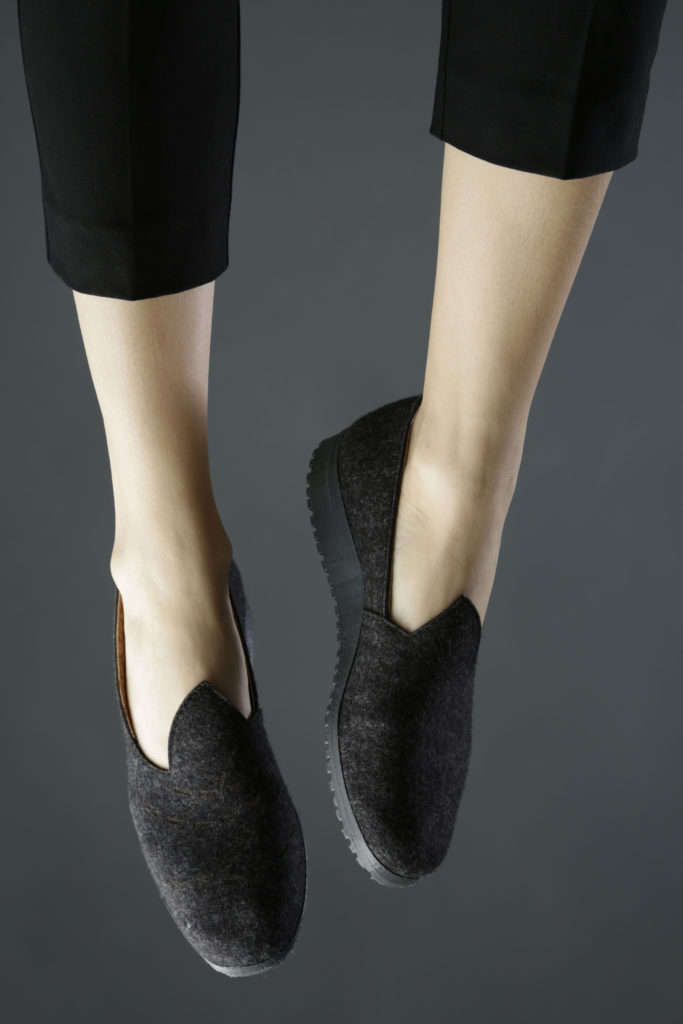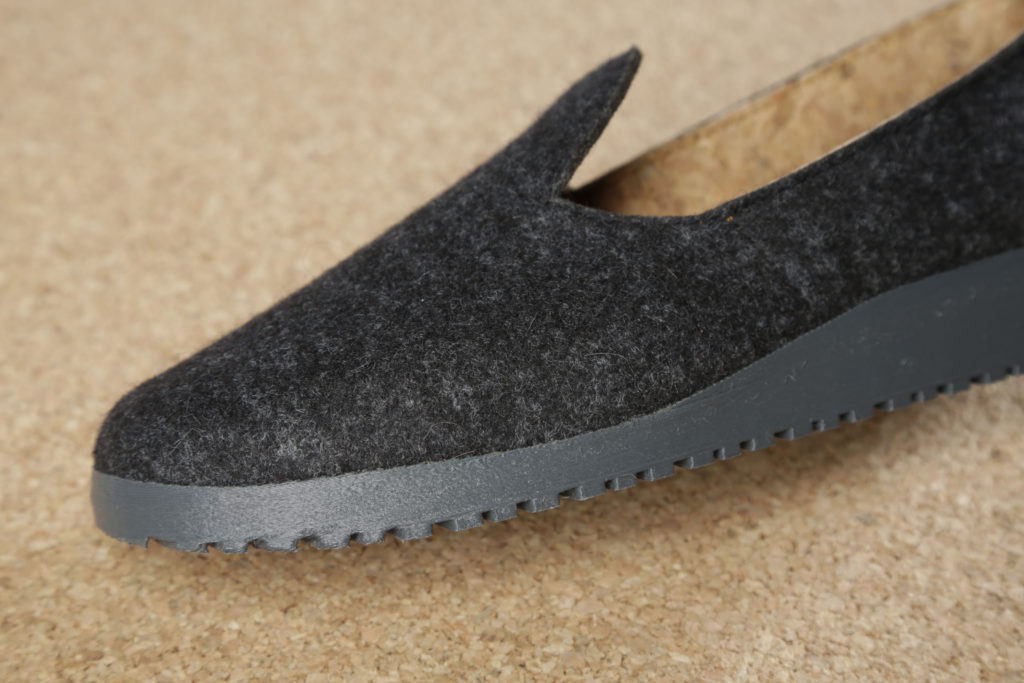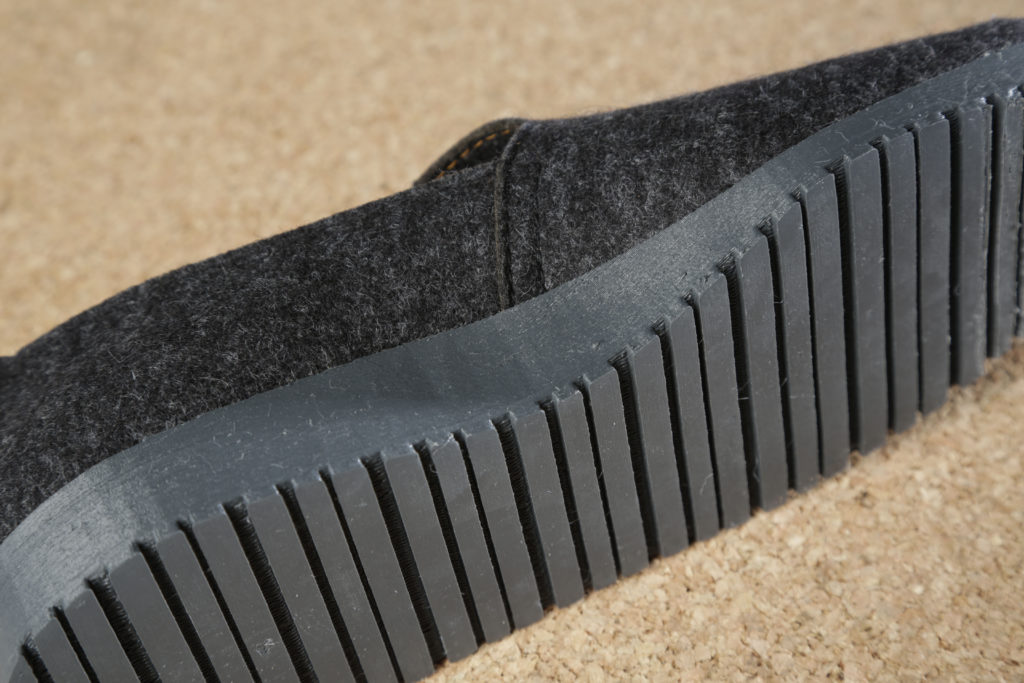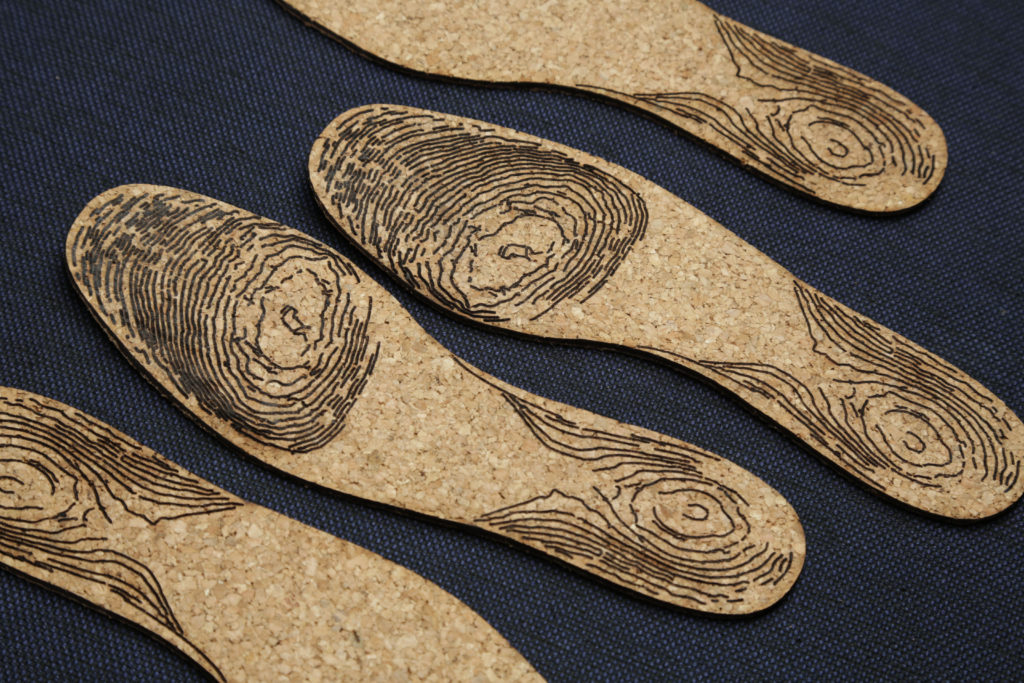Lõputöö uurimuse eesmärk oli teada saada, kuidas tööstuslik tootmine on kujunenud ning kuidas jalatsitööstus areneb. Millised digitaalsed tehnoloogiad ja keskkonnasõbralikud materjalid on kasutuses ning mis toetavad jätkusuutlikku tootmist.
Digitaalsed tehnoloogiad on tootmise tulevik. Jalatsite tootmine on tööjõutundlik tööstus, kus mitmed valmistamisetapid vajavad inimkäe täpsust.
Tootmistehnoloogia areneb järjest enam automatiseeritud masinate ja robotitega tootmise suunas, mis asendab inimtööjõu ning toodab kiiremini ja täpsemalt ning ennetab materjalide ülekasutamist. Muutumas on ka arusaam standardsüsteemist, 3D-tehnoloogiad võimaldavad jalatsid toota lähtuvalt kandja jala mõõtudest, mis seab esikohale jalanõu mugavuse.
Tuleviku jalanõu arvestab jala eripäradega, toetab liikumist ning toote valmistamise tehnoloogiline protsess on suur osa jalatsi esteetilisest ja funktsionaalsest väärtusest. 3D-tarkvarad ja 3D-printimine on saanud
oluliseks tootmisvõimaluseks väiketootjatele, kes keskenduvad eelkõige
kohalikele tarbijatele ja nišikaubandusele.
Praktilises osas valminud jalanõude loomise protsess andis ülevaate, kuidas
kujundada 3D-programmidega, millised võimalused on laseriga lõigates ning kuidas valmistada detaile 3D-printeriga.
The aim of the thesis was to understand how industrial production of footwear is developing. What kind of digital technologies and environmental friendly
materials are in use and support sustainable manufacturing.
Digital technologies are the future of production. Footwear production is a labour-sensitive industry where several stages need the precision of the human hand but is evolving towards machine and robot based production technologies which would replace human work and produce faster, with more precision and would insure that materials are not used wastefully. The understanding of the standardised size system is also changing, 3D technologies enable footwear to be produced according to the size of the wearer’s foot, placing the comfort of the shoe above everything else.
Footwear of the future will consider every individual foot, supports movement and the technological process of footwear production is a big part of the aesthetic and functional value of the final product. 3D-software and 3D-printing have become an important production opportunity for small-scale manufacturers who focus above all on local consumers and niche
markets.
Creating a paire of footwear in the practical part of the thesis gave an overview of how to design using 3D-programs, what are the possibilities of laser cutting and how to create details using a 3D-printer.










